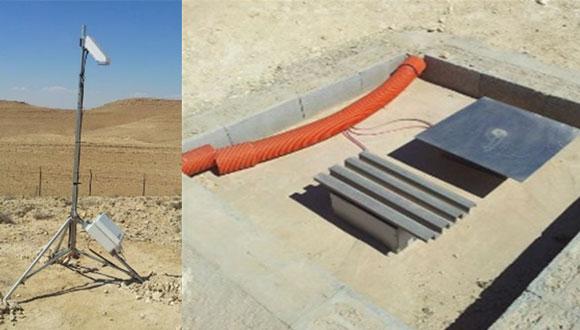The Electrical Nature of the Atmosphere
Researcher: Roy Yaniv
Advisors: Prof. Colin Price and Prof. Yoav Yair
Researcher: Roy Yaniv
Advisors: Prof. Colin Price and Prof. Yoav Yair
The Earth's atmosphere can be described as a huge global electric circuit (GEC). The batteries of the electric circuit are the ~1500 thunderstorms active around the globe at any time. Each storm produces about 1 Ampere of current that flows up to the ionosphere and returns back to Earth in areas known as fair weather regions, like the Negev Desert. The vertical conduction current density (Jz) measured at the surface in fair weather regions is of typical value of ~1-2 pA m-2. In addition, the ionosphere and the Earth's surface act like a huge spherical capacitor, with a voltage of 250kV between the ionosphere and the Earth. Near the surface, the vertical electrical field (Ez) is of typical value between 100-300 V/m and correlates with the global diurnal thunderstorm activity - known to be the Carnegie curve.
We have built 2 measurement stations in Mizpe Ramon and Mount Hermon to measure the parameters of the GEC. For the Jz we have two conducting plates that measure the conduction and displacement currents (see figure below, right). The second sensor (below, left) is a rotating Electric field meter (Campbell Scientific) used to monitor the changes atmospheric electric field.
The diurnal changes of the vertical E-field (Ez) in fair weather days are found to correlate with the global Carnegie curve, but are also influenced by the morning heating of the sun that lifts aerosols into the air and increases the Ez values. We are studying the local and global impacts on the GEC variability, as well as how solar storms impact the GEC.


